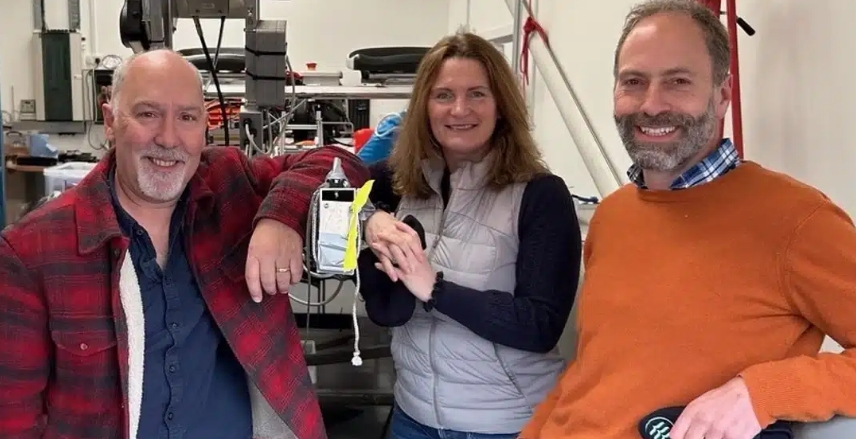
Porpoise Power's co-founders (from left to right) Adrian Thomas, Hilary Struthers, and John Kennedy
The company’s tidal energy system features a bio-inspired, oscillating hydrofoil design that operates across a wider range of tidal flows and depths compared to conventional technologies. Unlike traditional turbines, the system uses a fin that moves up and down in tidal streams, resembling dolphin movements. This allows deployment in more locations, increasing tidal energy’s scalability and capacity. The technology aligns with gravitational cycles, providing predictable, steady power.
Porpoise Power’s system addresses challenges like limited deployment sites and high costs, offering baseload electricity at costs comparable to offshore wind and consistency similar to nuclear power. The company estimates that four 30 km by 30 km tidal arrays could meet the UK’s entire baseload electricity demand. Designed to minimize ecological impact, the system is suitable for sensitive areas, supporting a decarbonized energy system.
Zero Carbon Capital stated: “Our investment is supporting the Porpoise Power team as they progress technology development, model levelised cost of electricity (LCOE) at scale, and conduct trials at UK tidal sites.” The funding will aid trials at UK test sites, with plans for a future fundraising round to install hundreds of kilowatts of grid-connected tidal capacity under a UK Contract for Difference (CfD).
Founded by John Kennedy, CEO with experience scaling deeptech ventures; Adrian Thomas, a University of Oxford professor specializing in bioinspired engineering; Hilary Struthers, a former Shell executive; and Martin Hall, an engineer with marine systems expertise, the team combines technical and commercial knowledge. Their mission is to deliver reliable, affordable tidal energy, as they noted: “We are proud to support Porpoise Power on their mission to bring reliable, renewable, affordable energy to the grid — and to give tidal energy the role it deserves in our zero-carbon future.”
With global electricity demand projected to double by 2050, Porpoise Power’s technology aims to complement wind and solar, providing a stable energy source to meet growing needs.